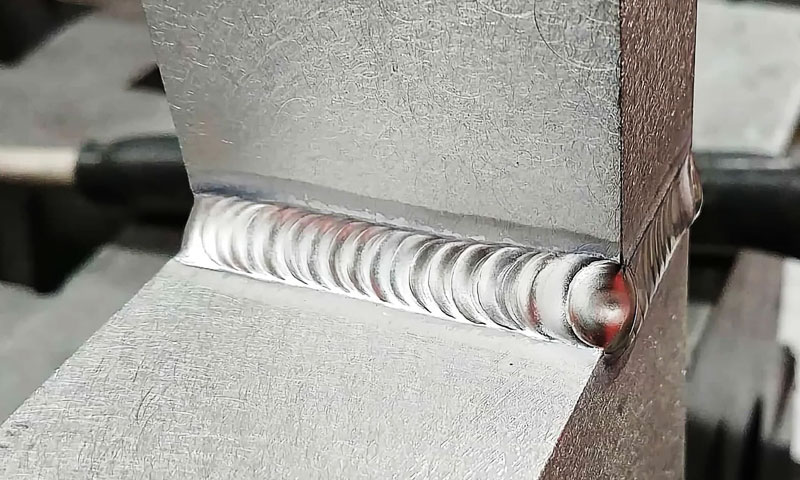
Aluminum and its alloys are highly susceptible to deformation during welding due to their high thermal conductivity, large coefficient of thermal expansion, and surface oxide film. Controlling aluminum welding deformation requires a systematic approach.
The following are twelve key steps to reduce aluminum welding deformation, covering the entire process from design and preparation to welding techniques and post-weld treatment:
一. Design and Preparation Phase
1. Optimizing Joint Design
1.1: Principle: Minimize the amount of weld metal filler while meeting strength requirements.
1.2: Method:
● Prefer groove welds over fillet welds, as groove welds typically produce less deposited metal.
● Use the thinnest allowable plate thickness.
● Design the weld to lie on the neutral axis of the structure to offset deformation.
● For thick plates, use a U-groove instead of a V-groove to reduce machining and filler metal.
2. Using Fixtures
2.1: Principle: Limit the free expansion and contraction of the workpiece during welding by rigidly securing it. 2.2: Method:
● Use strong clamps and pressure plates to securely secure the workpiece to the welding platform or base.
● For long welds, use restraint plates to reinforce the weld area.
2.3: Caution: Excessive restraint can generate significant internal stress, potentially leading to cracks. A balance must be struck between controlling deformation and avoiding cracks.
3. Allowing for Shrinkage
3.1: Principle: Anticipate the amount of deformation and pre-apply offsets in the direction opposite to the deformation before assembly.
3.2: Method:
● Based on experience or calculations, allow for welding shrinkage in part dimensions or assembly clearances. This requires extensive practical experience and data accumulation.
4. Pre-Stretching
4.1: Principle: Before welding, apply a pre-stress to the workpiece in the direction opposite to the welding deformation.
4.2: Method:
● Mechanical Pre-Stretching: Use a tool such as a hydraulic jack to apply a pre-tensioning stress to the weld area.
● Thermal Pre-Stretching: Use a flame or heating tape to preheat a specific area of the weld to cause it to expand. During welding, the expansion of this area is compounded by the pre-expansion, and the contraction decreases after cooling.
二. Welding Process Stages
5. Selecting a Low-Heat-Input Welding Method
5.1: Principle: Heat is the root cause of deformation, so reducing total heat input is key.
5.2: Method:
● Prefer metal inert gas arc welding (MIG/GMAW) or tungsten inert gas arc welding (TIG/GTAW).
● For demanding workpieces, consider using advanced methods such as variable polarity plasma arc welding (VPPAW) or laser welding (LBW), which offer higher energy density and a narrower heat-affected zone.
6. Using Pulse Welding Techniques
6.1: Principle: Pulse welding can significantly reduce average welding current and heat input while maintaining deep penetration.
6.2: Method:
● Modern MIG and TIG welders have a pulse function. By adjusting the pulse parameters, a “pulse-by-pulse, drop-by-drop” transition can be achieved, allowing for precise control of heat input.
7. Use the correct welding sequence and direction
7.1: Principle: Distribute heat accumulation and allow deformation to offset each other.
7.2: Method:
● Segmented back-welding method: Divide a long weld into several sections, welding each section from back to front. This way, the heat from the subsequent section tempers the previous section and distributes stress.
● Symmetrical welding: For symmetrical structures, have two welders weld simultaneously from the center toward the ends, or from the ends toward the center symmetrically.
● Skip welding method: Perform welding in a skipped pattern to avoid overheating in localized areas.
8. Control welding parameters
8.1: Principle: While ensuring fusion and penetration, use the lowest possible current and highest possible welding speed.
8.2: Method:
● Avoid using excessive welding current.
● Once you have mastered the technique, increase the welding speed as much as possible to reduce the heating time of the base metal.
● Use a small-diameter wire/tungsten electrode and appropriate parameters.
9. Using Weld Backings
9.1: Principle: Control the weld pool and root shape to facilitate rapid heat dissipation.
9.2: Method:
● For full penetration welds, use a copper or ceramic backing. The copper backing quickly conducts heat away from the weld root, reducing deformation in this area.
三. Post-Weld Treatment
10. Hammering the Weld
10.1: Principle: Mechanical hammering induces plastic expansion in the weld metal, thereby offsetting some of the contraction stresses.
10.2: Method:
● Use a ball-peen hammer or pneumatic needle hammer to hammer the weld metal (especially the surface weld bead).
10.3: Caution: Hammering can work-harden the material and is not suitable for the final weld bead or components with stringent fatigue requirements. This procedure requires caution and experience.
11. Thermal Correction
11.1: Principle: Utilizing the principle of thermal expansion and contraction, localized heating is applied to specific points within the deformed area, causing the area to contract in the opposite direction as it cools, thereby correcting the deformation.
11.2: Method:
● Using a TIG welding torch (without filler wire) or a dedicated flame heating torch, apply spot or linear heating around or behind the deformed protrusion.
● The heating temperature is typically kept below 250°C to avoid overheating. This method requires exceptional skill.
12. Vibrational Stress Reduction or Natural Aging
12.1: Principle: Vibration or natural aging are used to equalize and release residual weld stresses.
12.2: Method:
● Vibrational Stress Reduction (VSR): The workpiece is connected to a vibrator via specialized equipment and vibrated at a resonant frequency for tens of minutes to effectively reduce internal stresses.
● Natural Aging: The weldment is left undisturbed for weeks or months to allow stress to naturally release. This method is time-consuming but cost-effective.
Summary:
The most effective approach is prevention first, supplemented by correction. In practice, the above measures should be combined based on the specific product structure, requirements, and production conditions to achieve optimal control. Planning from the very beginning and strictly controlling heat input throughout the welding process are the keys to success.

